Abstract
The rate of isolation of organisms resembling Haemophilus vaginalis (Corynebacterium vaginale) from vaginal specimens was not significantly affected by anaerobic versus carbon dioxide incubation atmospheres or whether specimens were inoculated on isolation media immediately after collection or after a delay of 6 h. Forty-one clinically isolated strains were provisionally divided into 30 H. vaginalis strains and 11 H. vaginalis-like (HVL) strains based on morphological and growth characteristics. The H. vaginalis strains were less reactive in API-20A identification test strips, (Analytab Products, Inc.) using Lombard-Dowell broth, than in a modified basal medium that contained proteose peptone no. 3 (Difco). The numbers and kinds of substrates fermented by 30 clinical and 2 reference strains of H. vaginalis varied among conventional, API, Minitek (Baltimore Biological Laboratory), and rapid buffered substrate fermentation systems. A greater number and variety of carbohydrates were fermented by the 11 HVL strains more consistently in all four test systems. Analysis of volatile and nonvolatile fermentation end products by gas-liquid chromatography did not reveal significant differences between the H. vaginalis and HVL strains. However, the latter group grew in peptone-yeast extract-glucose broth, whereas the H. vaginalis strains did not grow without the addition of starch to peptone-yeast extract-glucose. All of the reference and clinical strains were similar in their susceptibilities to a variety of antimicrobial compounds except sulfonamides, which inhibited the HVL strains and bifidobacteria but not the H. vaginalis strains. Sulfonamide susceptibility or resistance corresponded in part to the H. vaginalis and HVL-bifidobacteria strain reactions on selected conventional fermentation substrates. Susceptibility or resistance to sulfonamides and metronidazole in conjunction with fermentation tests is described to aid in the separation of H. vaginalis from other possibly unrecognized biotypes of H. vaginalis or other vaginal bacteria that presumptively resemble the organism. A human blood medium known as V agar was also of considerable value in distinguishing H. vaginalis from HVL strains, because only the H. vaginalis strains produced diffuse beta-hemolysis on V agar.
Full text
PDF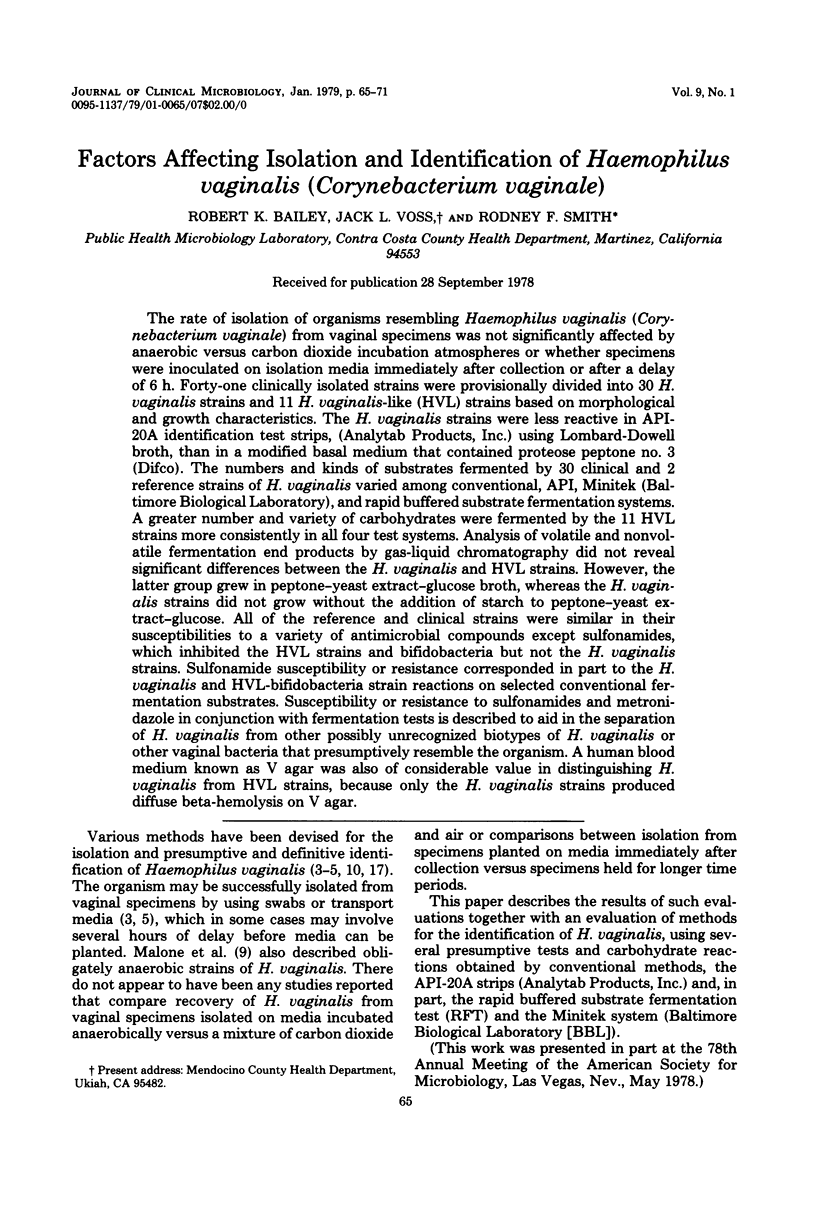
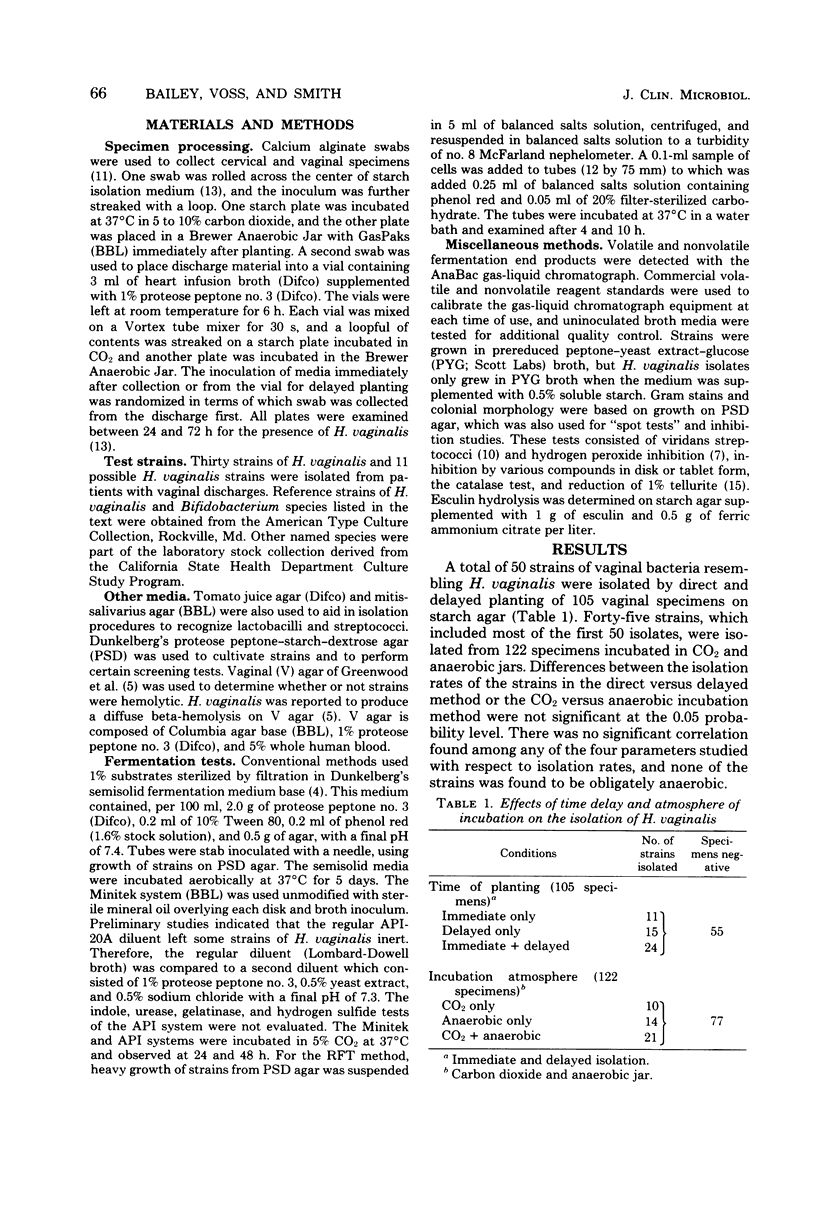
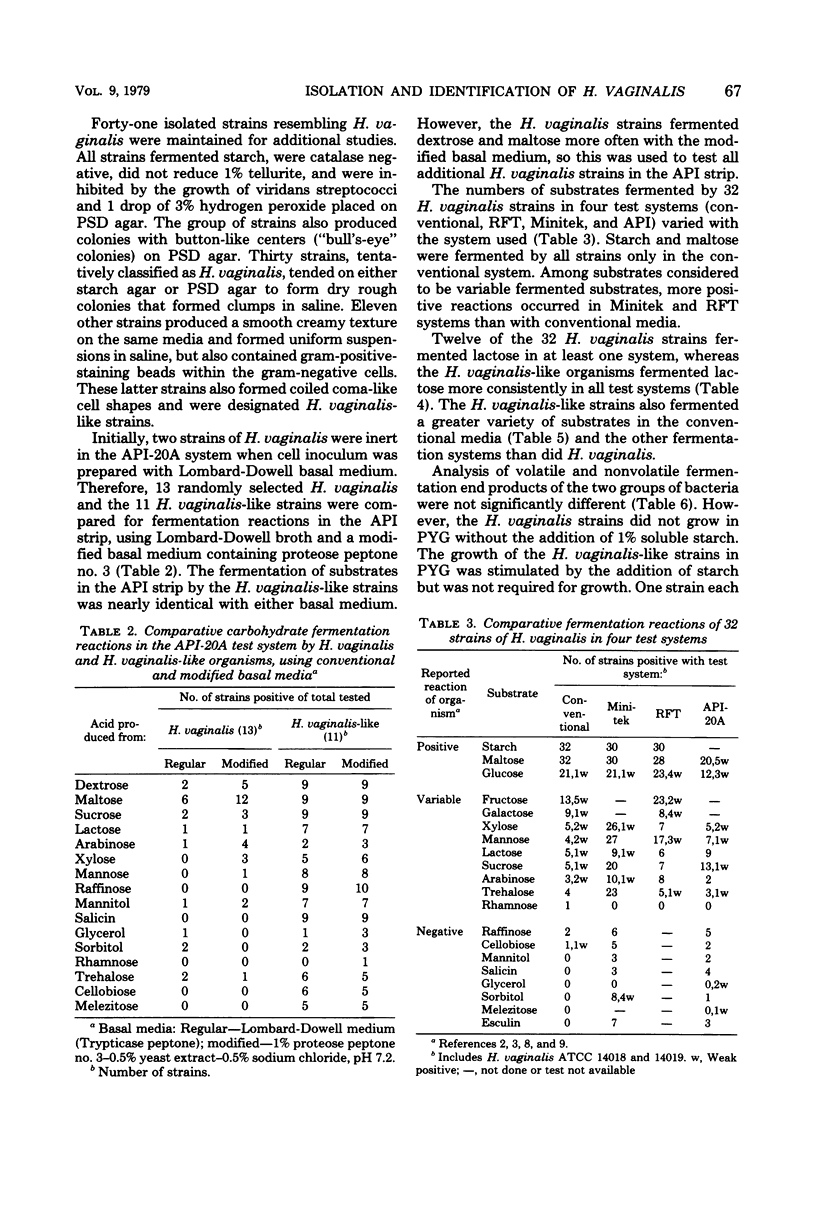
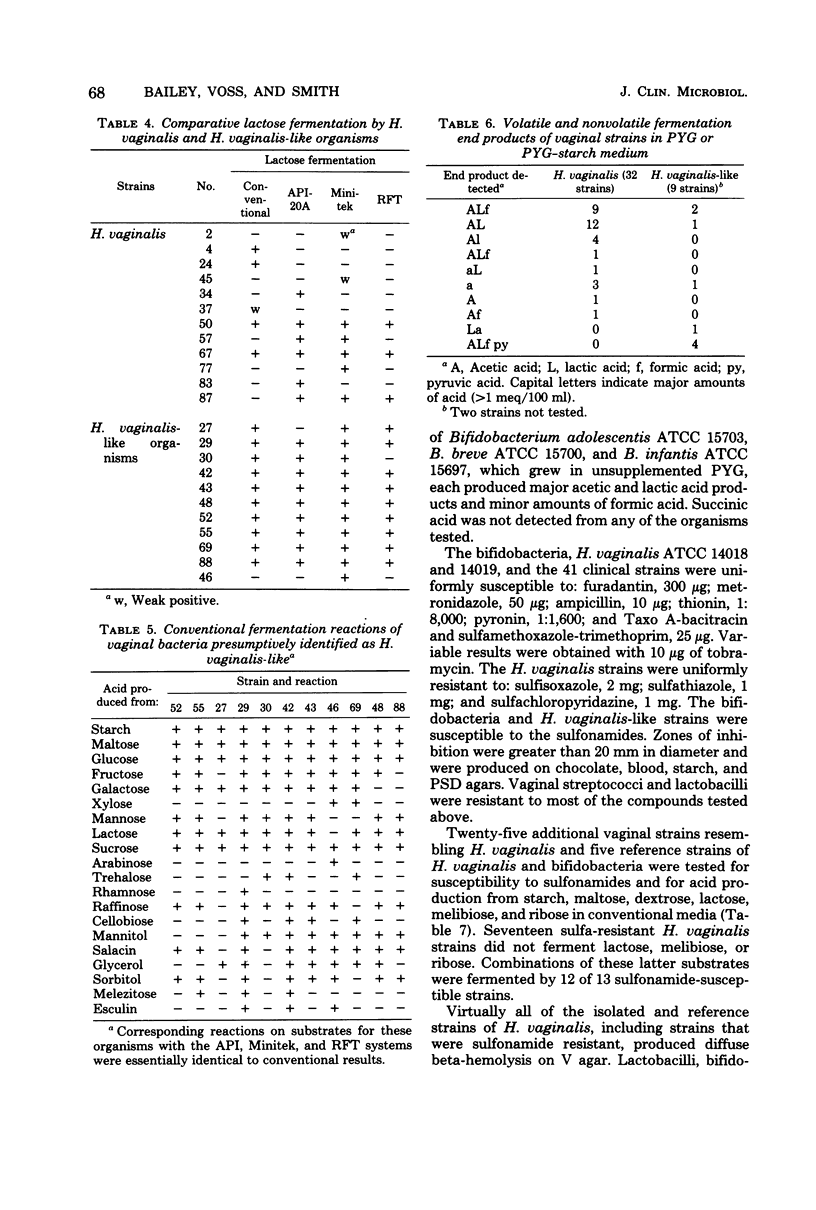
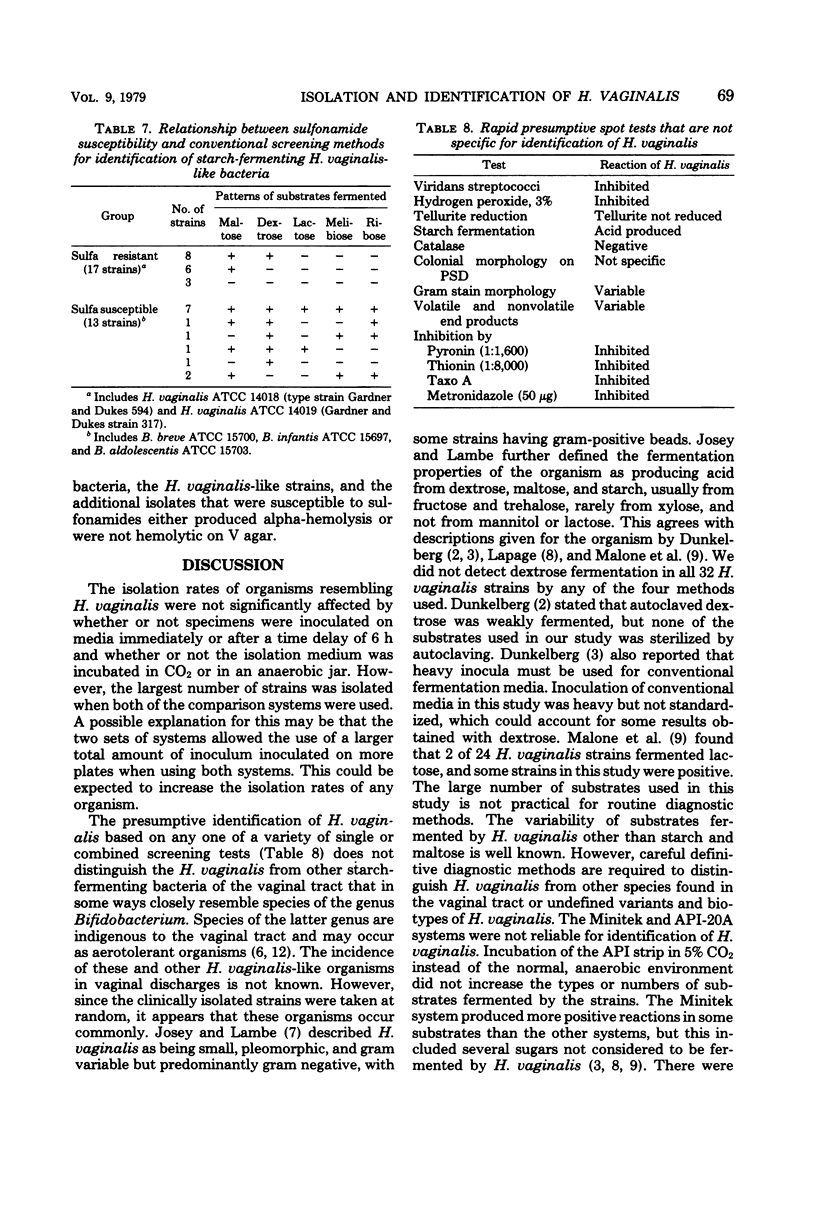
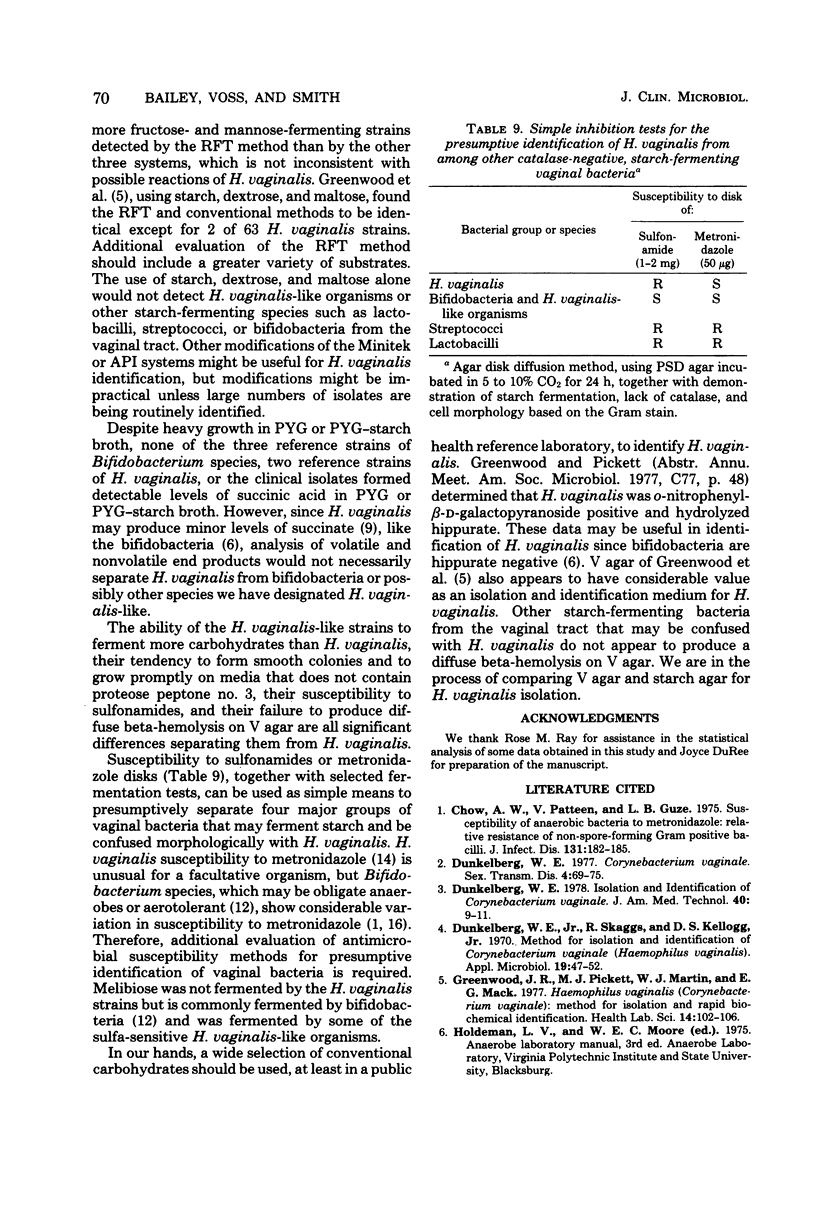

Selected References
These references are in PubMed. This may not be the complete list of references from this article.
- Chow A. W., Patten V., Guze L. B. Susceptibility of anaerobic bacteria to metronidazole: relative resistance of non-spore-forming gram-positive baccilli. J Infect Dis. 1975 Feb;131(2):182–185. doi: 10.1093/infdis/131.2.182. [DOI] [PubMed] [Google Scholar]
- Dunkelberg W. E. Corynebacterium vaginale. Sex Transm Dis. 1977 Apr-Jun;4(2):69–75. doi: 10.1097/00007435-197704000-00010. [DOI] [PubMed] [Google Scholar]
- Dunkelberg W. E., Jr, Skaggs R., Kellogg D. S., Jr Method for isolation and identification of Corynebacterium vaginale (Haemophilus vaginalis). Appl Microbiol. 1970 Jan;19(1):47–52. doi: 10.1128/am.19.1.47-52.1970. [DOI] [PMC free article] [PubMed] [Google Scholar]
- Greenwood J. R., Pickett M. J., Martin W. J., Mack E. G. Heamophilus vaginalis (Corynebacterium vaginal): method for isolation and rapid biochemical identification. Health Lab Sci. 1977 Apr;14(2):102–106. [PubMed] [Google Scholar]
- Josey W. E., Lambe D. W., Jr Epidemiologic characteristics of women infected with Corynebacterium vaginale (Haemophilus vainalis). J Am Vener Dis Assoc. 1976 Sep;3(1):9–13. [PubMed] [Google Scholar]
- Malone B. H., Schreiber M., Schneider N. J., Holdeman L. V. Obligately anaerobic strains of Corynebacterium vaginale (Haemophilus vaginalis). J Clin Microbiol. 1975 Sep;2(3):272–275. doi: 10.1128/jcm.2.3.272-275.1975. [DOI] [PMC free article] [PubMed] [Google Scholar]
- Rodgers H. A., Hesse F. E., Pulley H. C., Hines P. A., Smith R. F. Haemophilus vaginalis (Corynebacterium vaginale) vaginitis in women attending public health clinics: response to treatment with ampicillin. Sex Transm Dis. 1978 Jan-Mar;5(1):18–21. doi: 10.1097/00007435-197801000-00006. [DOI] [PubMed] [Google Scholar]
- Smith R. F., Dunkelberg W. E., Jr Inhibition of Corynebacterium vaginale by metronidazole. Sex Transm Dis. 1977 Jan-Mar;4(1):20–21. doi: 10.1097/00007435-197701000-00007. [DOI] [PubMed] [Google Scholar]
- Smith R. F. New medium for isolation of Corynebacterium vaginale from genital specimens. Health Lab Sci. 1975 Jul;12(3):219–224. [PubMed] [Google Scholar]
- Smith R. F., Voss J. L., Bailey R. K. Tellurite reduction test to aid in the recognition of Corynebacterium vaginale. J Clin Microbiol. 1977 Mar;5(3):375–377. doi: 10.1128/jcm.5.3.375-377.1977. [DOI] [PMC free article] [PubMed] [Google Scholar]
- Sutter V. L., Finegold S. M. Susceptibility of anaerobic bacteria to 23 antimicrobial agents. Antimicrob Agents Chemother. 1976 Oct;10(4):736–752. doi: 10.1128/aac.10.4.736. [DOI] [PMC free article] [PubMed] [Google Scholar]
- Vice J. L., Smaron M. F. Indirect fluorescent-antibody method for the identification of Corynebacterium vaginale. Appl Microbiol. 1973 Jun;25(6):908–916. doi: 10.1128/am.25.6.908-916.1973. [DOI] [PMC free article] [PubMed] [Google Scholar]


